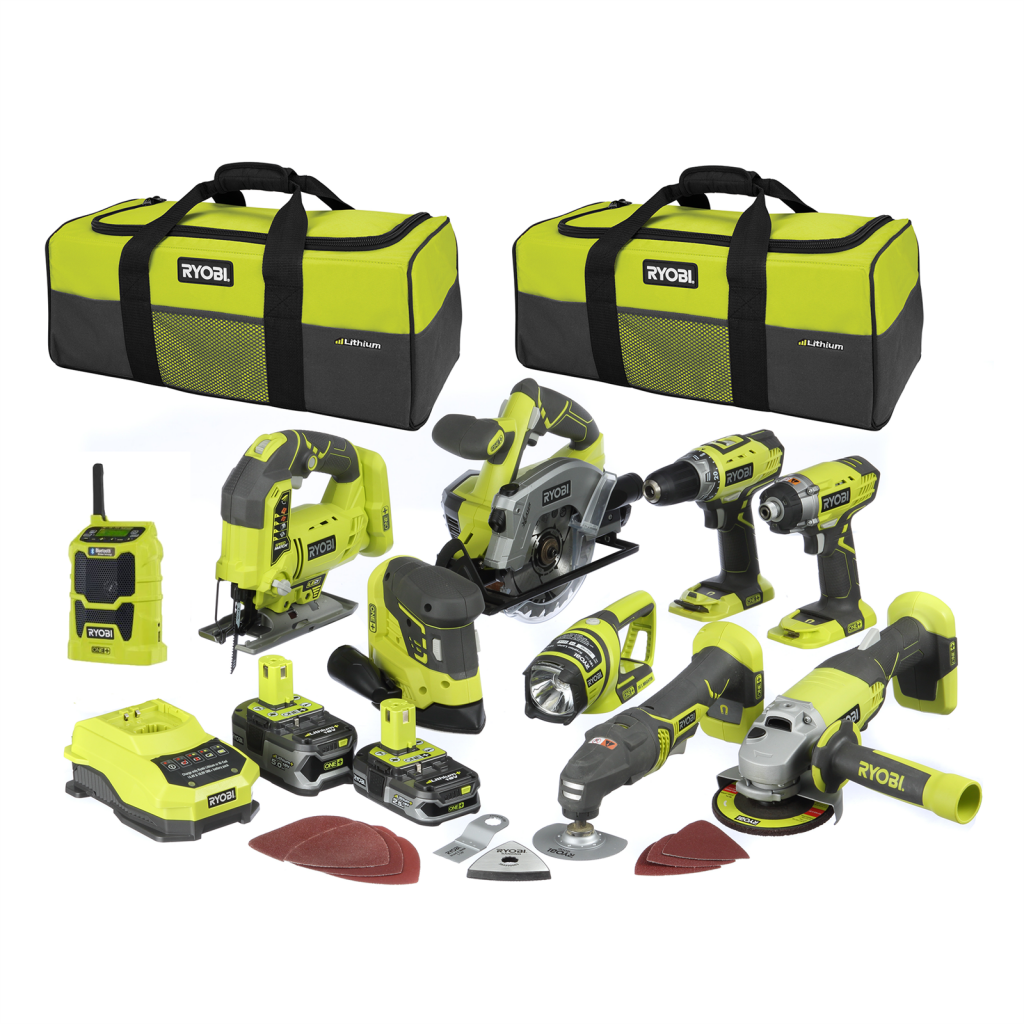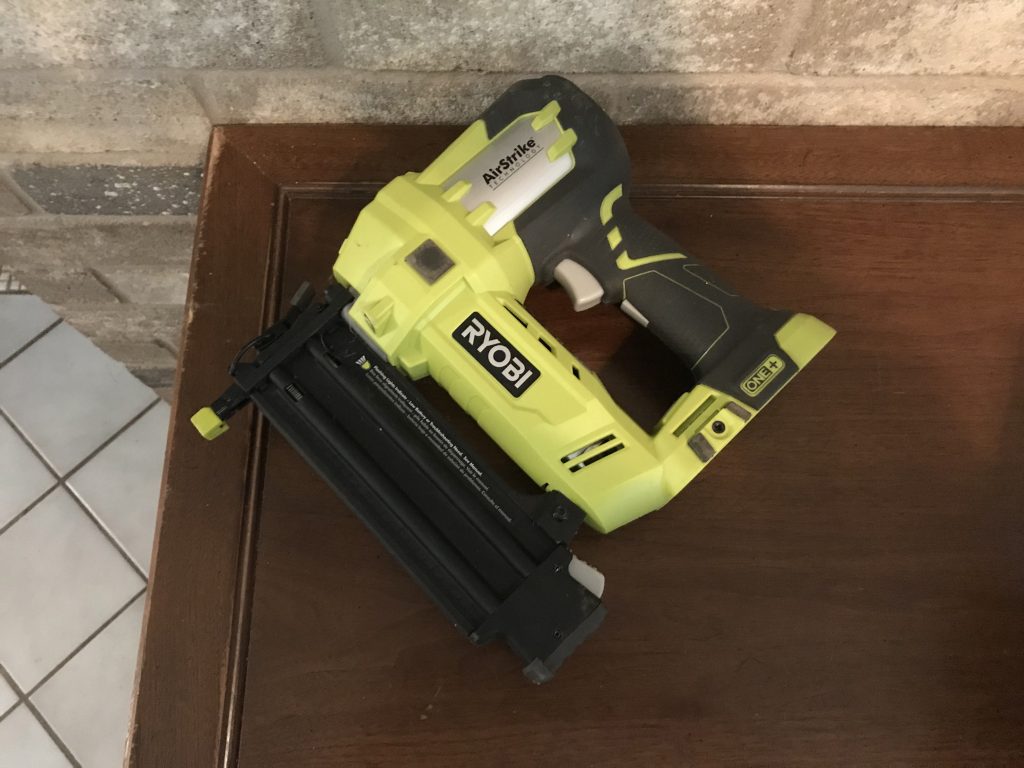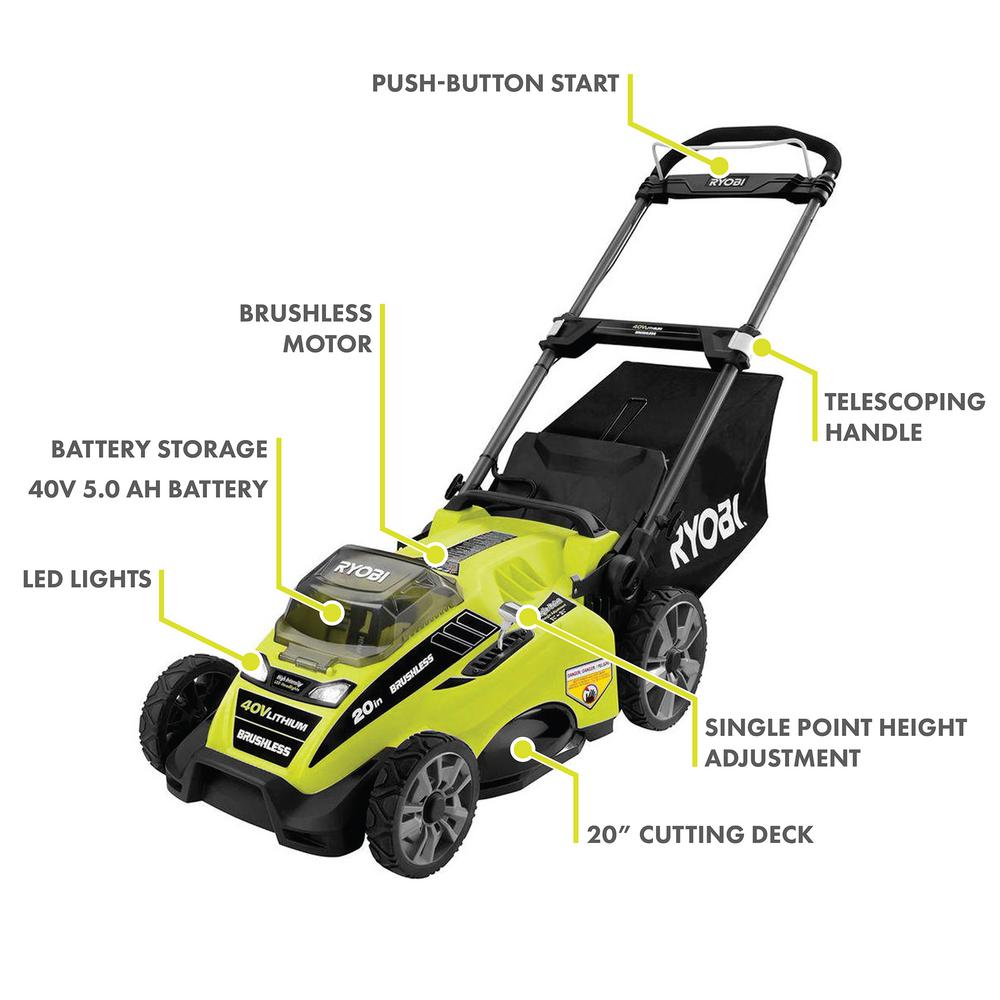by Kelly R. Smith
|

There are many tool companies that offer a selection of battery-operated power tools. You can choose between Ryobi, Milwaukee, Porter Cable, Makita, and many others. Now that the battery technology has improved so much (lithium), these tools are more practical. Let’s look at some of the Ryobi 18V ONE+ power tools in their lineup. Their site tells us they offer over 175 different tools in this family. I’ve been using 10 on a regular basis so I’ll focus on them. As an aside, I also use their 40V lawnmower. I also have one of their AM/FM radios that uses the same battery, but that’s not technically a tool, is it?
Ryobi 18V Power Tools
Note that some of these tools come with batteries and chargers and with some it’s just the tool, so the prices reflect that fact.
- The AirStrike brad nailer. I use this nailer for various woodworking projects and trim installation. Reliable and easy to adjust.
- 1/2″ drill/driver Kit. Lightweight and features a two-speed gearbox and a 24-position clutch for maximum control. No chuck key required.
- Reciprocating saw. Their version of the famous Sawzall. For larger jobs I drag out my Makita corded version but this one is ideal for things like tree limbs up to 3″ in diameter.
- 1/4″ impact driver or 3/8″ impact wrench. It’s handy for those tight jobs. The wrench has an auto mode to prevent over-tightening.
- Compact brushless cut-off tool. Cuts metal, plastic, drywall, tile, and wire shelving. The base fits flat to the work surface for inhanced cutting accuracy. That’s a nice engineering touch. Cuts at up to 19,500 RPM.
- 3/8” right angle drill. Ryobi claims this is the industry’s most compact model. It’s also good for those tight situations.
- Hand-held belt sander. The front pommel handle adjusts to 5 different positions for individual comfort. The tool-free belt-tracking feature makes adjustment on the fly easy.
- Variable speed jig saw. Very lightweight and portable.
- Circular saw. Another reason for battery operation. When I was installing baseboards not long ago, I took rough measurements before going to Home Depot. I took my saw with me and dealt with those super long pieces right there in the parking lot (the Tacoma bed doesn’t like 15′ floppy stock.
- Hand-held router. While I love my router table in the shop, it’s not very convenient to lug around.
Those are the Ryobi 18V ONE+ power tools that I have personal experience with. Overall I’m extremely satisfied. I’ve found them dependable, price-competitive, and offering some innovative features. I like the fact that they have brushless motors. The battery chargers run at a reasonable rate. The batteries are non-fade, meaning that they don’t begin to lag when they are running out of juice.

Looking for more great content? Visit our partner sites:
I offer article and blog-writing services. Interested? Hire Me!
Did you find this article helpful? Thanks for supporting this free site with a small donation!
Visit Kelly’s profile on Pinterest.
About the Author:
 Kelly R. Smith is an Air Force veteran and was a commercial carpenter for 20 years before returning to night school at the University of Houston where he earned a Bachelor’s Degree in Computer Science. After working at NASA for a few years, he went on to develop software for the transportation, financial, and energy-trading industries. He has been writing, in one capacity or another, since he could hold a pencil. As a freelance writer now, he specializes in producing articles and blog content for a variety of clients. His personal blog is at I Can Fix Up My Home Blog where he muses on many different topics.
Kelly R. Smith is an Air Force veteran and was a commercial carpenter for 20 years before returning to night school at the University of Houston where he earned a Bachelor’s Degree in Computer Science. After working at NASA for a few years, he went on to develop software for the transportation, financial, and energy-trading industries. He has been writing, in one capacity or another, since he could hold a pencil. As a freelance writer now, he specializes in producing articles and blog content for a variety of clients. His personal blog is at I Can Fix Up My Home Blog where he muses on many different topics.






 Kelly was a commercial carpenter for 20 years before returning to night school at the University of Houston where he earned a Bachelor’s Degree in Computer Science. After working at NASA for a few years, he went on to develop software for the transportation and financial and energy trading industries. He has been writing, in one capacity or another, since he could hold a pencil. As a freelance writer now, he specializes in producing articles and blog content for a variety of clients. His personal blog is at
Kelly was a commercial carpenter for 20 years before returning to night school at the University of Houston where he earned a Bachelor’s Degree in Computer Science. After working at NASA for a few years, he went on to develop software for the transportation and financial and energy trading industries. He has been writing, in one capacity or another, since he could hold a pencil. As a freelance writer now, he specializes in producing articles and blog content for a variety of clients. His personal blog is at 